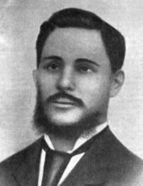

The interaction between space and population was crucial in his interpretations, leading to the identification of the key axes of colonization: São Vicente (with population growth extending to Rio de Janeiro, Minas Gerais, Goiás, and Mato Grosso), Bahia (extending into Piauí and Maranhão), Pernambuco (extending into Paraíba, Rio Grande do Norte, and Ceará), and Maranhão (Amazon). He regarded the settlement of the area between the São Francisco River and the Parnaíba River as "the most important issue in Brazilian history", as it facilitated the connection between the centre-north and centre-south regions of Brazil. He applied the same geo-historically inspired reasoning to the colonization of Minas Gerais, identifying the regions of Ouro Preto, Mariana-Sabará, Caeté, Serro, and Pitangui-São João D'El Rei as its regional expansion centres. However, the explanation goes beyond geographical interpretation: Capistrano examines the socioeconomic and political dimensions of territorial expansion, which leads him to view the struggle for territory as the central issue in Brazilian history, focusing on problems related to sesmarias [land distribution system] and the legitimisation of land ownership. Furthermore, particularly after studying the economics of Gustav Schmoeller, the importance of the effective occupation of the ecumene becomes clear. The economic and social influence of the sugar mills and tobacco plantations was determined by the cost of transporting their products. Outside the boundaries of this area, he noted, a "nature economy" was brewing, a problem was only solved in regions where there was good river flow or on the coastline. The author is also credited with the pioneering systematic analysis of the social and economic differences between the sugarcane and cattle-breeding regions. Here, social mobility was heightened not only due to the predominance of the cowboy's free labour but also by his material advancement, as he received calves in exchange for his work, which subsequently became new herds. The diverse dynamics of the cattle-breeding region inspired Capistrano to create one of the most vivid and well-known descriptions of the "leather civilisation": "Leather was the door of the huts, the rough bed on the hard floor and later the bed for childbirth; leather was all the ropes, the rubber for carrying water, the mocó [pouch] or saddlebag for carrying food, the stretcher for storing clothes, the backpack to mill corn for the horses, the bridle to hold them when travelling... the clothes for entering the woods."
This work is financed by national funds through FCT - Foundation for Science and Technology, I.P, in the scope of the projects UIDB/04311/2020 and UIDP/04311/2020.
